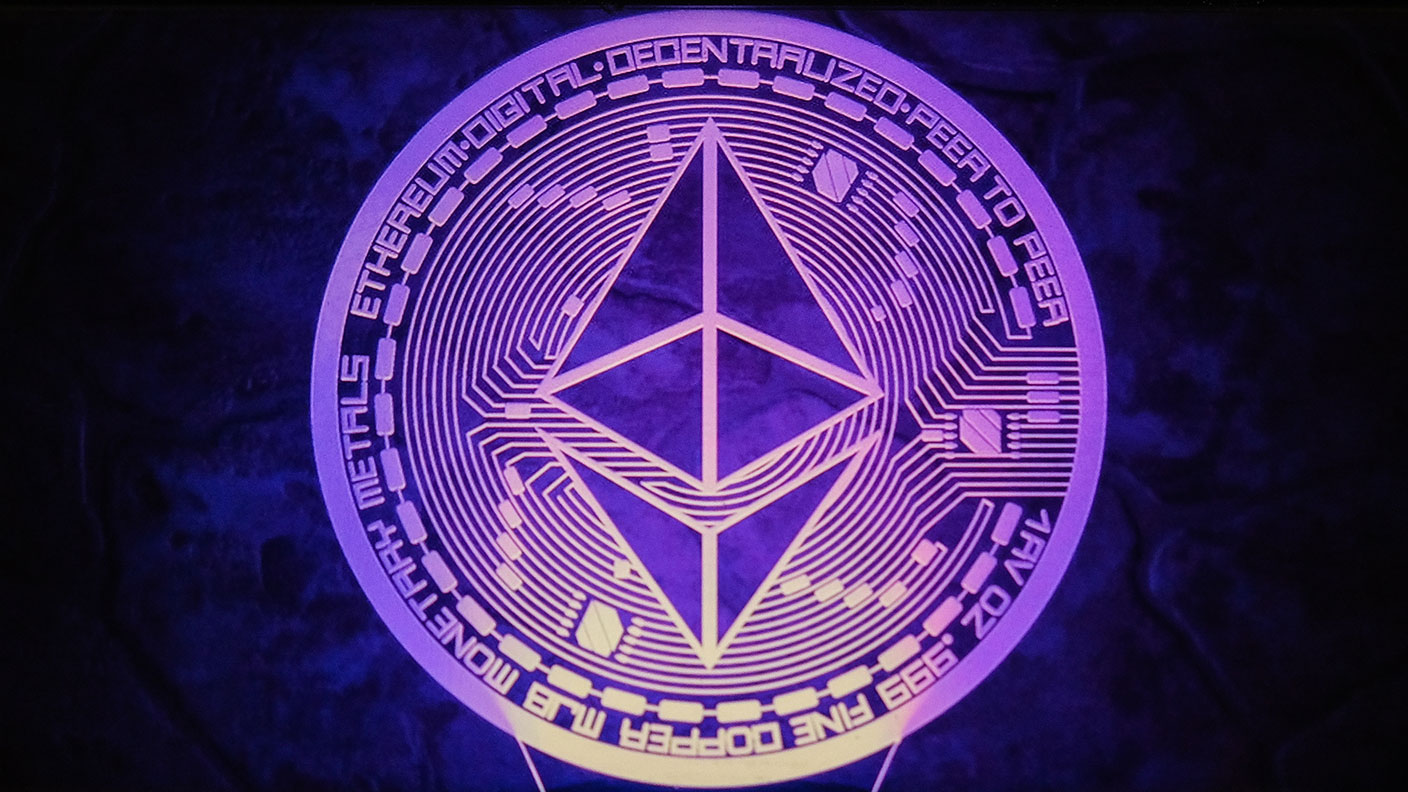Ether price looks set to climb as network “hard fork” approaches
A significant update to the Ethereum blockchain is expected to launch on 4 August. Saloni Sardana looks at what it means for ether, the world's second-largest cryptocurrency.


The Ethereum blockchain’s much anticipated London Update is set to kick in in less than a month. The “hard fork” – a network protocol change that converts previously invalid blocks to valid or vice versa – will launch on 4 August.
The update is considered to be a key part of the Ethereum 2.0 project, which aims to ditch Ethereum’s current “proof of work” protocol – the most popular method of verifying transactions on the blockchain and receiving consensus – to a “proof-of-stake system” by the end of 2021. The problem with proof-of-work is that it uses a lot of energy. Proof-of-stake is considered more energy efficient and reduces the risk of attacks by miners on the network.
The London hard fork was divided into various testnets. The final hard fork release date follows the successful implementation of the Ropsten and Goerli testnets, important steps in the roadmap to implement Ethereum 2.0. Testnets are the name given to the process of making any changes to Ethereum’s network before a project goes live.
MoneyWeek
Subscribe to MoneyWeek today and get your first six magazine issues absolutely FREE

Sign up to Money Morning
Don't miss the latest investment and personal finances news, market analysis, plus money-saving tips with our free twice-daily newsletter
Don't miss the latest investment and personal finances news, market analysis, plus money-saving tips with our free twice-daily newsletter
Ether is already trading near a three-week high at $2,380, gaining 21% last week alone, in anticipation of the event.
So what is ether and what does the London Update mean for the world’s second largest cryptocurrency?
What is ether?
Ethereum is a blockchain, invented in 2015 by Vitalik Buterin, and ether is the native cryptocurrency behind it. But though the terms are used interchangeably, differences exist between them.
Ethereum shot to fame for its ability to execute smart contracts, as such it has been particularly useful in decentralised finance. Over recent months, the network has also garnered fame for its role in the rise of non-fungible tokens, cryptographic tokens that act as a token of ownership of digital assets.
Often seen as a bitcoin rival, ether is regarded as one of the more “serious” cryptocurrency projects, compared to the likes of other altcoins.
So then why is an update necessary?
While ether is taken more seriously, its supply is at present unlimited. This differs from cryptocurrencies like bitcoin which have a fixed supply of 21 million coins.The problem with an unlimited supply is that it makes cryptocurrency crashes even more likely as an endless amount of units of ether can flood the market.
It also makes it less likely that ether can be used as an inflation hedge. Many bitcoin holders cite bitcoin’s ability to stand up against inflation as a key reason to buy it.
Changes being proposed under the London Update
So now that we know what the limitations of ether are, what will the London Update change?
The London protocol update introduces five Ethereum Improvement Proposals (EIPs) (standards specifying new features being added to the blockchain). EIP-1559 is the most significant one.
At present, the fees for ether transactions (called “gas”) fluctuate wildly, and users could only guess how many tokens an ether transaction would use, which undermines the network’s efficiency.
But EIP-1559 also implements a fee-burning mechanism which will result in coins being permanently removed from ether’s total circulating supply. So this is controversial as it can create a hole in miners’ revenues. The aim of EIP-1559 Is to transform ether into a less inflationary cryptocurrency.
Another key provision is EIP-3554, which relates Ethereum’s “difficulty time bomb''. The difficulty time bomb is the concept that explains the difficulty behind ether’s mining algorithms. The difficulty bomb means puzzles get more complicated over time, which in turn make it much harder for miners to solve them. So as more miners enter, both the computing power and energy required to compute transactions increase, but the rewards fall, making mining economically unviable. The implementation of the time bomb has now been delayed to 1 December.
What are the practical implications for investors?
In the run up to 4 August when the hard fork will be launched, the price of ether could rise. But that doesn’t mean it won’t crash at any point. As EIP-1559 results in coins being permanently burned, there is always the chance of a miner revolt, which could complicate the process of making ether less inflationary.
Also as Marie Tatibouet, chief marketing officer of cryptocurrency exchange Gate points out on Cointelegraph.com, miners can still accept tips, which may cause a “fees war”.
“As the network gets bigger and with Ethereum continuing to be the primary smart contract platform, will that not trigger another ‘fees war’ among the users who are willing to pay extra to speed up their transactions?”
Ether prices also rose by 9,000% in 2017, and made only modest gains thereafter. So it is not unrealistic to think that ether prices can fall again.
But one thing is clear, independent of whether ether prices rise or not, it is clearly not a bogus cryptocurrency, nor one that investors can afford to ignore. Ether has a high “chance” of overtaking bitcoin as a dominant store of value, US banking giant Goldman Sachs said in a report last month. So it is more likely than not that ether prices have yet to reach their top.
Get the latest financial news, insights and expert analysis from our award-winning MoneyWeek team, to help you understand what really matters when it comes to your finances.
Saloni is a web writer for MoneyWeek focusing on personal finance and global financial markets. Her work has appeared in FTAdviser (part of the Financial Times), Business Insider and City A.M, among other publications. She holds a masters in international journalism from City, University of London.
Follow her on Twitter at @sardana_saloni
-
 Where did house prices rise and fall the most in 2025?
Where did house prices rise and fall the most in 2025?Some parts of the UK have seen yearly property price growth of up to 12.6%, but others have seen values fall by as much as 8.9%, research shows.
-
 ‘Why I have ditched my Help to Buy ISA for cash savings and the stock market’
‘Why I have ditched my Help to Buy ISA for cash savings and the stock market’Without the 25% bonus, my Help to Buy ISA is effectively redundant, says MoneyWeek writer Sam Walker.
-
 What's behind the big shift in Japanese government bonds?
What's behind the big shift in Japanese government bonds?Rising long-term Japanese government bond yields point to growing nervousness about the future – and not just inflation
-
 Halifax: House price slump continues as prices slide for the sixth consecutive month
Halifax: House price slump continues as prices slide for the sixth consecutive monthUK house prices fell again in September as buyers returned, but the slowdown was not as fast as anticipated, latest Halifax data shows. Where are house prices falling the most?
-
 Rents hit a record high - but is the opportunity for buy-to-let investors still strong?
Rents hit a record high - but is the opportunity for buy-to-let investors still strong?UK rent prices have hit a record high with the average hitting over £1,200 a month says Rightmove. Are there still opportunities in buy-to-let?
-
 Pension savers turn to gold investments
Pension savers turn to gold investmentsInvestors are racing to buy gold to protect their pensions from a stock market correction and high inflation, experts say
-
 Where to find the best returns from student accommodation
Where to find the best returns from student accommodationStudent accommodation can be a lucrative investment if you know where to look.
-
 The world’s best bargain stocks
The world’s best bargain stocksSearching for bargain stocks with Alec Cutler of the Orbis Global Balanced Fund, who tells Andrew Van Sickle which sectors are being overlooked.
-
 Revealed: the cheapest cities to own a home in Britain
Revealed: the cheapest cities to own a home in BritainNew research reveals the cheapest cities to own a home, taking account of mortgage payments, utility bills and council tax
-
 UK recession: How to protect your portfolio
UK recession: How to protect your portfolioAs the UK recession is confirmed, we look at ways to protect your wealth.
